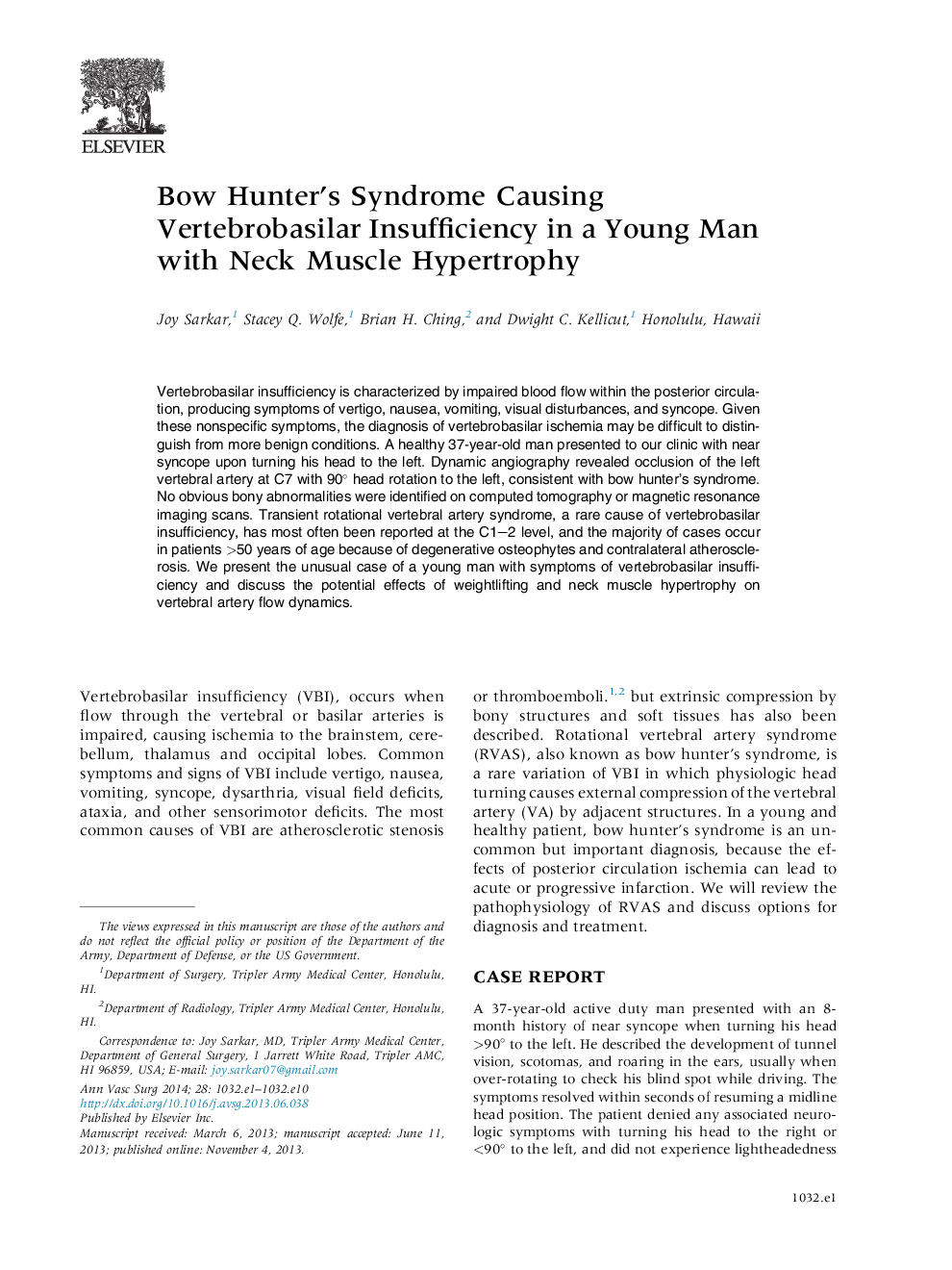| Article ID | Journal | Published Year | Pages | File Type |
|---|---|---|---|---|
| 2886709 | Annals of Vascular Surgery | 2014 | 10 Pages |
Abstract
Vertebrobasilar insufficiency is characterized by impaired blood flow within the posterior circulation, producing symptoms of vertigo, nausea, vomiting, visual disturbances, and syncope. Given these nonspecific symptoms, the diagnosis of vertebrobasilar ischemia may be difficult to distinguish from more benign conditions. A healthy 37-year-old man presented to our clinic with near syncope upon turning his head to the left. Dynamic angiography revealed occlusion of the left vertebral artery at C7 with 90° head rotation to the left, consistent with bow hunter's syndrome. No obvious bony abnormalities were identified on computed tomography or magnetic resonance imaging scans. Transient rotational vertebral artery syndrome, a rare cause of vertebrobasilar insufficiency, has most often been reported at the C1-2 level, and the majority of cases occur in patients >50 years of age because of degenerative osteophytes and contralateral atherosclerosis. We present the unusual case of a young man with symptoms of vertebrobasilar insufficiency and discuss the potential effects of weightlifting and neck muscle hypertrophy on vertebral artery flow dynamics.
Related Topics
Health Sciences
Medicine and Dentistry
Cardiology and Cardiovascular Medicine
Authors
Joy Sarkar, Stacey Q. Wolfe, Brian H. Ching, Dwight C. Kellicut,
